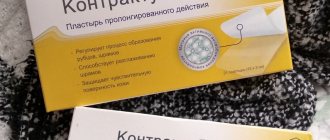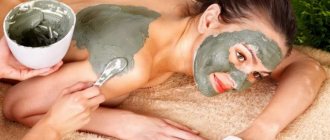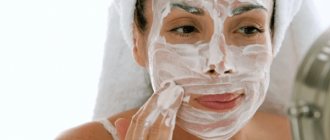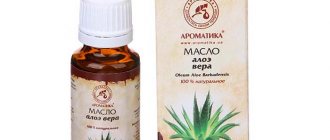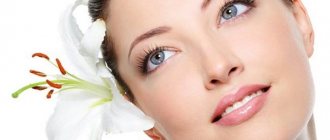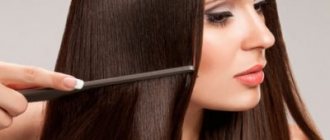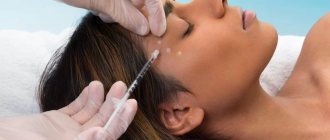Operating principle
All such drugs are based on the property of the main active ingredient - botulinum toxin - to block the passage of nerve impulses to the muscles.
A few hours after its administration, temporary paralysis occurs and the muscles completely relax. And the skin in the places of creases above them gradually smooths out. The drugs are extremely toxic. Even when used in microdoses, they provoke mild symptoms of poisoning - headache, nausea, decreased vision clarity. In case of an overdose, they intensify many times over and can lead to extremely unpleasant consequences, including anaphylactic shock or cardiac arrest.
Only cosmetologists with medical education and special training work in Botox offices. Additional training is very important, since at such seminars, manufacturer representatives tell all the intricacies of using a particular product. And even among analogues, the rules for calculating the dosage and dilution of drugs can differ quite significantly.
How to count Botox units?
Whatever analogue of Botox you purchase, it is always based on the main active ingredient - botulinum toxin. It is he who blocks nerve impulses going to the muscular system. Just a few hours pass after the injections, and patients begin to feel changes:
- Muscle paralysis that does not last long
- Relaxation.
- Straightening creases and smoothing the dermis.
If you follow the recommendations of specialists, the resulting effect will last for at least six months.
It is important to consider that the described product is highly toxic. At first, patients, in addition to discomfort, experience other disturbances:
- clarity of vision decreases;
- nausea;
- headache.
All of the above suggests that overdoses are unacceptable. The result can be anaphylactic shock and even cardiac arrest. That is why, even in salons, only specially trained cosmetologists with medical diplomas are allowed to work with botulinum toxin.
In addition to basic medical education, cosmetologists attend special courses and seminars on Botox procedures. At such meetings, the effect of the drug is discussed, the intricacies of its dilution are discussed, and actions with various analogues are considered.
There is a generally accepted system for calculating a unit of Botox. The concept of a unit is arbitrary and is used by cosmetologists all over the world. Using the accepted designation, cosmetologists in salons in various countries calculate the dosage of the product.
A unit of Botox is considered a dose of neurotoxin A capable of killing 50% of laboratory rodents. This dosage is not dangerous for humans. However, one unit is not enough to achieve a visible effect.
The standard dosage of Botox is 100 units. However, you can find other types of dosage - 50 - 500 units. The latter are created for professional beauty salons and clinics.
To dilute botulinum toxin, sodium chloride saline solution is traditionally used.
What is a unit
Those who are already familiar with beauty injections know that the cost of the procedure directly depends on the volume of the drug used. And it is calculated in conventional units. This is a universal international designation that allows you to correctly calculate the dosage.
One unit is a dose of type A neurotoxin that, when administered, kills 50% of a population of laboratory mice. Naturally, it is relatively safe for humans. But it is also not enough to get the desired result.
Secrets of use
Naturally, no specialist will reveal all the secrets of using drugs based on botulinum toxin. And the point is not at all that they are afraid of competition and pay decent sums for attending professional seminars, although this factor is also present.
It will be worse if uncontrolled self-administration of drugs begins by those who do not understand medicine at all. Therefore, the information below is indicative and not a step-by-step guide.
Release forms
Branded certified drugs are a lyophilized mixture - in other words, a powder that requires additional dilution. Although you can buy solutions already fully prepared for administration via the Internet, their quality is highly questionable. Most likely, their main active ingredient is not Botox at all.
Basically, botulinum toxin preparations are produced in glass hermetically sealed bottles with a white powder that is uniform in consistency and color.
The standard dosage is 100 units. But there are volumes of 50 and even 500 units, which is more convenient for professional use. They are diluted with sterile saline solution - sodium chloride.
Breeding scheme
How to properly dilute the drug is described in great detail in each specific case by the instructions for it. There is usually a table there that helps calculate the concentration of the solution to obtain a certain number of units of the drug. All actions require the highest precision. An error of even 1 ml can lead to an overdose or insufficient effectiveness of the procedure.
The step-by-step scheme for preparing Botox 100 units for administration to a patient is as follows:
- The cosmetologist puts on rubber gloves and covers the work surface with a sterile napkin.
- After removing the protective cap, the bottle stopper is thoroughly wiped with an antiseptic (not alcohol!).
- A sterile saline solution is drawn into a 10 ml syringe (from 0.5 to 8 ml - depending on the desired concentration).
- The required amount is injected through a puncture in the cap of the bottle.
- Then shake the mixture thoroughly until the powder is completely dissolved.
- If solid inclusions remain, the product is of poor quality or has deteriorated, it must be thrown away!
- The prepared solution is drawn into small syringes that will be used for injections.
The remains of the diluted drug can be stored in the refrigerator for no more than two hours, after this time it must be disposed of. It is impossible to freeze ready-made solutions, as some unscrupulous cosmetologists do - this causes its denaturation and sharply reduces its effectiveness.
The instructions contain entire tables that clearly describe the concentrations of the drug and the required amount of saline solution to obtain them. It is easy for professionals to work with them. An amateur can make a mistake and get extremely undesirable consequences.
Dosages
Calculating the required dosage of a drug is a special art that comes only with experience. Naturally, standard doses are also prescribed in the instructions. But, as practice shows, when working with a patient, the doctor also takes into account:
- his age;
- skin condition;
- its thickness and density;
- depth of wrinkles;
- frequency of administration.
As a rule, much more drug is used for the first procedure than for subsequent ones. Some products, for example the popular “Dysport”, have a cumulative effect and with each new introduction the result lasts longer, but you need a little less of it.
On average, 1-2 units of the drug are used per point. And its final amount depends on the area of the problem area and the depth of facial wrinkles. The area between the eyebrows usually requires 10-25 units of Botox, the crow's feet 15-30 units, and the forehead can take up to 50 units of the finished solution.
Questions for a cosmetologist
Those who are going to undergo a rejuvenation procedure with Botox or its analogues have many questions related to the dilution and use of toxic drugs. We asked a cosmetologist who regularly performs anti-aging procedures in a cosmetology clinic to answer some of them.
What is the shelf life of the diluted solution?
Some unscrupulous cosmetologists, in order to save money, freeze unused diluted Botox and other similar drugs. I do not recommend doing this under any circumstances. Both Botox and its relatives Xeomin and Dysport must be diluted strictly according to the instructions and used immediately.
If a diluted solution remains, it can be put in the refrigerator, but for no more than 2 hours. In cosmetic clinics with a large flow of clients, this is acceptable. After 2 hours, the diluted drug should be poured out.
As for the freezing mentioned above, it leads to denaturation of the drug and a sharp decrease in its effectiveness. This means that the rejuvenation result will last less than the planned period.
For women who turn to specialists for youth injections, I recommend carefully choosing a cosmetologist and relying on reviews from friends and acquaintances. You must trust the doctor 100%, and you have the right to ask that the drug be diluted in your presence. After all, we are talking about an expensive product that you pay for. It must meet the deadline and be diluted strictly according to the instructions.
Average cost 100 units. Botox costs 12,000 rubles, and its analogues cost about the same. You pay, you call the tune. An expensive procedure should be done by reliable specialists.
Common mistakes when diluting Botox?
Alas, even certified cosmetologists sometimes make mistakes when working with Botox and other drugs containing botulinum toxin. This is due to the fact that Botox is a very specific and often unpredictable remedy. Its application should always be based on two principles:
- Instructions that are the result of long-term clinical studies.
- Individual characteristics of a particular patient.
The latter can significantly affect the former. If you intend to give injections with botulinum toxin, you cannot ignore such factors as the client’s age, the characteristics of her skin, and general health.
Here are 3 common mistakes made when working with Botox:
- Ptosis and asymmetry. Both problems are the result of an unprofessional approach to the rejuvenation procedure. With asymmetry, everything is clear: the left side of the face ceases to be symmetrical to the right. This may be subtle or pronounced. As for ptosis, it is a drooping of the upper eyelid. Poses a danger to patients. The reason is that the puncture was made in the wrong place. Sometimes the effect occurs due to the “migrate” property of Botox. If there is asymmetry, doctors administer an additional amount of the drug to even out the “picture”. Measures can also be taken to eliminate facial paralysis.
- Swelling. If this effect lasts for several days after the procedure, this is normal. Swelling occurs in 100% of patients and goes away within 2-3 days. But it happens that swelling persists for up to six months. As a result, a person who should have looked 5-10 years younger looks sick and tired. Most often, the problem occurs in the eye area, where the skin is especially delicate. Edema is the result of impaired circulation of venous blood and lymph. To eliminate this problem, hardware and manual massage are used. They also make injections with special drugs that have the ability to remove Botox. Special thermal masks can also help.
- Hypertonicity. The result of improper dilution or administration of the drug. In this case, the face begins to resemble a mask. To eliminate the problem, measures are taken to quickly dissolve the drug.
How much saline solution should I use?
To answer this question, here is a table:
| Volume of added solvent (ml) | Doses received (IU per 0.1 ml) |
| 0.5 | 20 |
| 1 | 10 |
| 2 | 5 |
| 2.5 | 4 |
| 4 | 2.5 |
| 8 | 1.25 |
In cosmetology, mistakes hurt patients’ pockets and sometimes their health. Therefore, I remind you once again, if you want your money to be well spent, carefully choose the one who will restore your youth and beauty.
Everything about diluting Botox before the procedure is described in the following video:
Insidious Botox
We emphasize once again that the given diagram for diluting Botox in a bottle of 100 units with saline solution is for informational purposes only. Other drugs have their own calculation systems, so it is very important to carefully study the instructions for each of them.
If the concentration is not high enough or the doses administered are small, the effect of Botox will not appear at all or will be insignificant. But an overdose will immediately make itself felt with signs of severe intoxication and impaired facial expressions, up to paralysis of half the face.
It is very important to choose the correct injection points for the drug. If you hit the wrong muscles, it’s easy to disrupt your facial expressions or get facial asymmetry. The same problems occur when the doctor does not take into account the diffuseness of the drug - its ability to penetrate into neighboring tissues.
But this is not the only problem. The body's response to neurotoxin type A can be unpredictable, especially if the patient is a heavy drinker. Often after it there are side effects that have nothing to do with the unprofessionalism of the cosmetologist:
- bruises and hematomas are almost inevitable, since the needle damages capillaries and small vessels;
- allergic reaction - to prevent it, it is better to do a test before the first use of the drug;
- double vision is a sign of the toxin affecting the brain;
- nausea, dizziness, weakness - the body’s natural reaction to poison entering it.
Most often, these unpleasant symptoms go away on their own, but in some cases qualified medical assistance becomes necessary.
Botox
Only doctors have the right to use Botox in procedures. First of all, those who have completed the most important training on working with the drug. The company is the official distributor of the manufacturer of the drug Botox (Botox) Allergan. The drug helps fight facial wrinkles, age-related changes and maintain a fresh appearance of the face.
To order a procedure or get a free Botox consultation. Call us on +7 985 233 00 25.
Rules for using Botox
Dilution of Botox
- Slowly inject 2.5 ml of NaCl 0.9% into a vial containing 100 U of Botox®;
- Gently stir the resulting solution using a rotating motion to avoid the formation of bubbles and denaturation.
- 2.5 ml NaCl 0.9% added to a bottle with 100 units. Botox® drug;
- The vacuum “pulled” the solvent into the bottle (if there is no vacuum, the bottle cannot be used);
- The solution is transparent, colorless to slightly yellowish, without foreign inclusions; slight opalescence is possible.
Botox dosage
- General recommended dose for correction of facial wrinkles: 20 Allergan units;
- Concentration after dilution: 100 Allergan units per 2.5 ml;
- Administration: 0.1 ml (4 Allergan units) at each of the 5 injection points.
Reasonable expectations for patients undergoing Botox® treatment:
- In general, clinical improvement occurs within 1 week after injection;
- The results of the procedure last up to 4 months;
- The interval between courses of treatment should be at least 3 months.
- Informed consent for the administration of Botox
- Complete instructions for Botox
Botulinum toxin type A - hemagglutinin complex - is a highly purified neurotoxic protein. Manufactured in compliance with local and international GMP standards accepted throughout the world.
Dosage form: Lyophilisate for the preparation of a solution for intramuscular administration.
Pharmacological group: peripherally acting muscle relaxant.
ATX code: M03AX01
Indications for use
Temporary correction of the appearance of wrinkles in the upper third of the face (glabellar wrinkles) in adults.
Main contraindications
- history of hypersensitivity to any component of the drug;
- inflammatory process at the site of the proposed injection(s);
- acute phase of infectious diseases;
- myasthenia gravis or Liabert-Eaton syndrome;
Botox
Storage conditions
At temperatures from 2 to 8 °C. Keep out of the reach of children.
Shelf life: 3 years.
Vacation conditions
For use in specialized medical institutions
Contraindications
- history of hypersensitivity to any component of the drug;
- inflammatory process at the site of the proposed injection(s);
- acute phase of infectious diseases;
- pronounced gravitational ptosis of facial tissues;
- pronounced “hernias” in the area of the upper and lower eyelids;
- myasthenia gravis or Liabert-Eaton syndrome;
- age under 18 and over 65 years.
Bibliography
- Instructions for use of the drug Botox®, approved on May 19, 2009.
- Stotland MA et al. Plast Reconstr Surg 2007;120:1386–1393.
- Beer KR et al. J Drugs Dermatol 2011;10(1):39–44.
use in procedures for expression lines and wrinkles, age-related changes to maintain a fresh appearance of the face
Summing up
The opinion of experts is categorical. Even if you know exactly how to dilute Botox and calculate its dosage, you should never give beauty injections at home yourself. It’s better to find an experienced cosmetologist and trust him with your face - this way the risk of side effects is much lower.
Professionals also know other secrets of using Botox. For example, when in contact with alcohol, its effectiveness decreases sharply. Therefore, injection sites are wiped with antiseptics that do not contain it. As you can see, in such a simple procedure at first glance, there are a lot of nuances. And therefore the price for it in good salons is quite high. But they also guarantee results.


